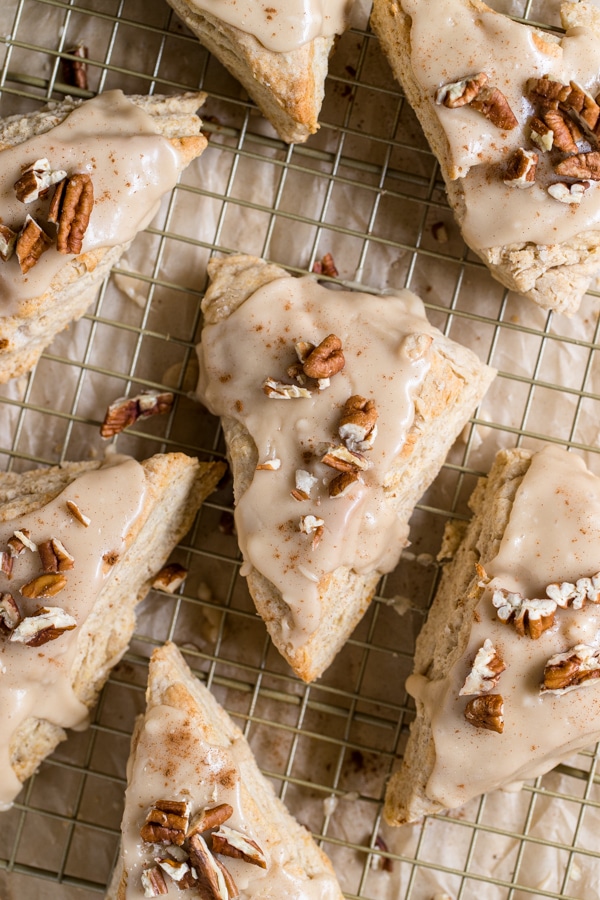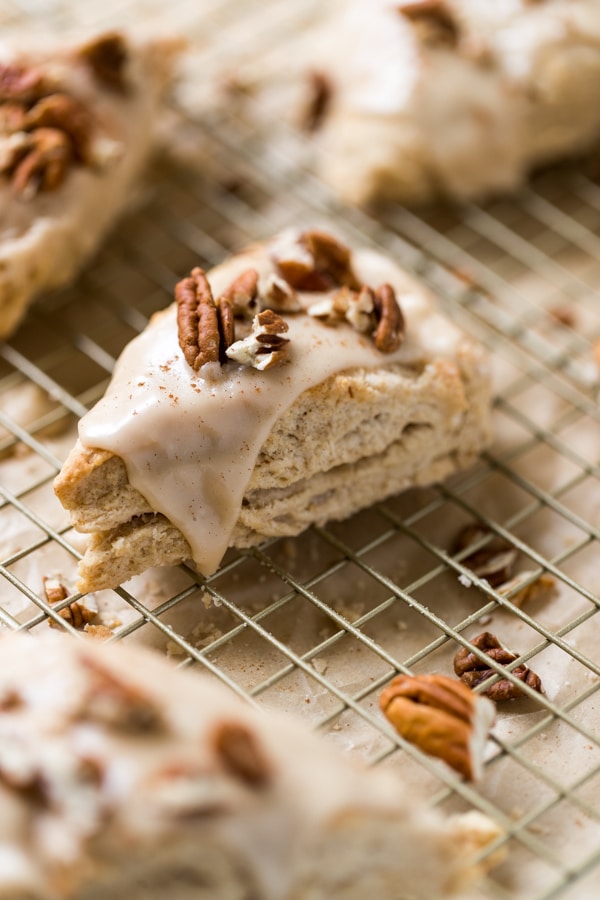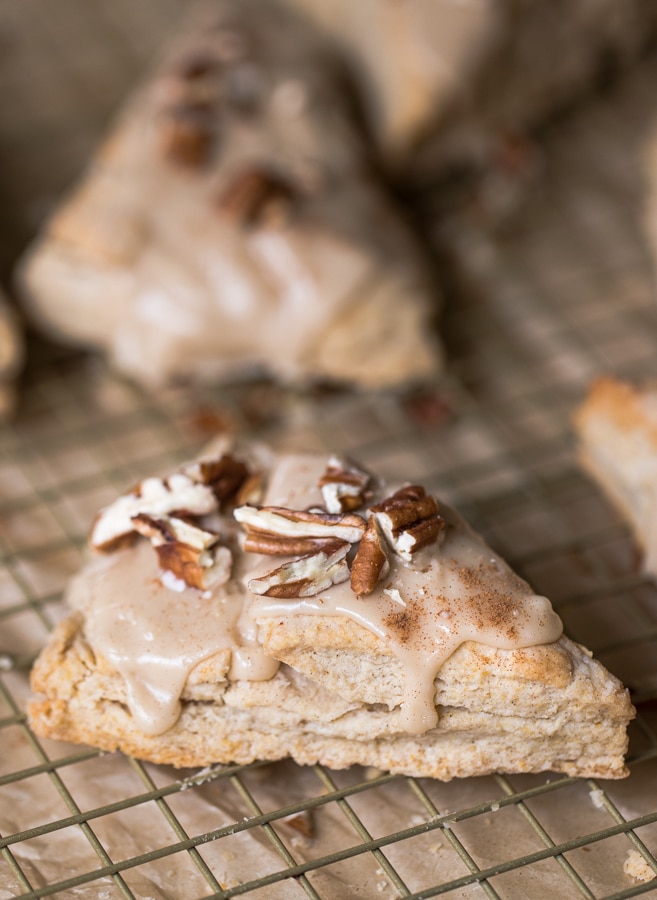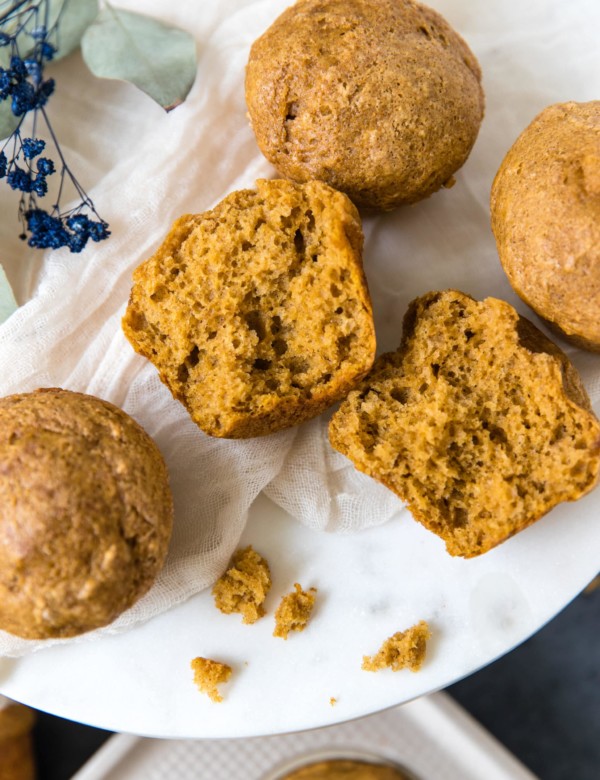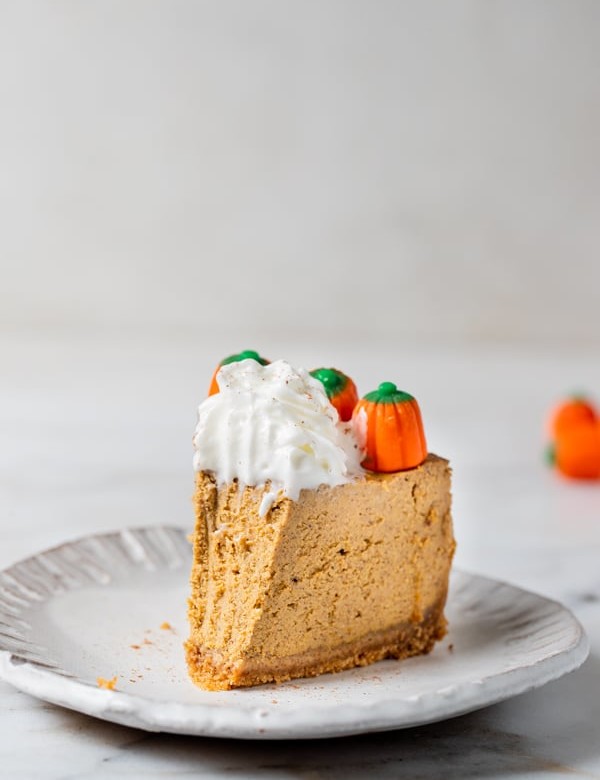These scones are a Fall delight: light and fluffy and finished with a sweet maple glaze on top.
Reasons to fall in love with Maple Scones
Only 9 ingredients for this simple scone recipe (and you probably have most or all these ingredients in your pantry already!) Taste like fall! Moist and soft inside Buttery and flaky Crumbly on the edges Your new favorite Fall scone!
If you like these Maple Scones I bet you’ll also like these Maple Cookies, this Apple Spice Cake, and these Maple Snickerdoodle Muffins!
For the scones:
All-Purpose Flour: As the name suggests, all-purpose flour is suitable for all types of baked goods such as bread, pizza, cookies, etc. It provides the structure in baked goods.. so it’s really important! Baking Powder: I love adding baking powder to most of my baked goods because it adds volume. It gives them a little lift towards the sky. Salt: Adding salt adds flavor to the scones. Cinnamon: Because cinnamon and Fall are a must! Butter: Butter is important when making scones because it is responsible for the flakiness and crisp edges. Heavy Cream: Heavy cream is a thick liquid, which is important to prevent the scones from coming out dry and flat. Sticking to heavy cream will ensure the scones taste better and look better rather than using another liquid, like milk. Brown Sugar: Brown sugar will a touch of extra sweetness and flavor. Egg: Will add flavor, structure, and lift to the scones. Vanilla Extract: Adds flavor and sweetness. Also an essential for yummy baked goods!
For the Maple Glaze:
Powdered sugar: Works beautifully to make icings and frostings because it dissolves so easily. Butter: Just a touch is needed for the glaze Maple Syrup: Essential for making the maple glaze! The maple syrup will add the actual maple flavor, which we need, want and love. Vanilla extract: Adding vanilla extract will provide added sweetness and flavor. Pecans: Garnishing with the pecans will add protein, flavor, and a crunchy texture.
Scone Baking Tips
Use cold butter – or even frozen butter for a better rise. The colder the better. When it comes to mixing, don’t over do it. Mix just until the dough comes together. Using heavy cream or buttermilk (thick liquids) avoids the scones from coming out flat and flavorless. Work fairly quickly with the dough so the cold ingredients stay cold. Be sure to work on a lightly floured surface and you can add a little bit of flour to help form into a ball, but do not add too much. Cut the butter into the scones using a pastry blender. Cut the scones into squares using a bench scraper for clean cuts.

